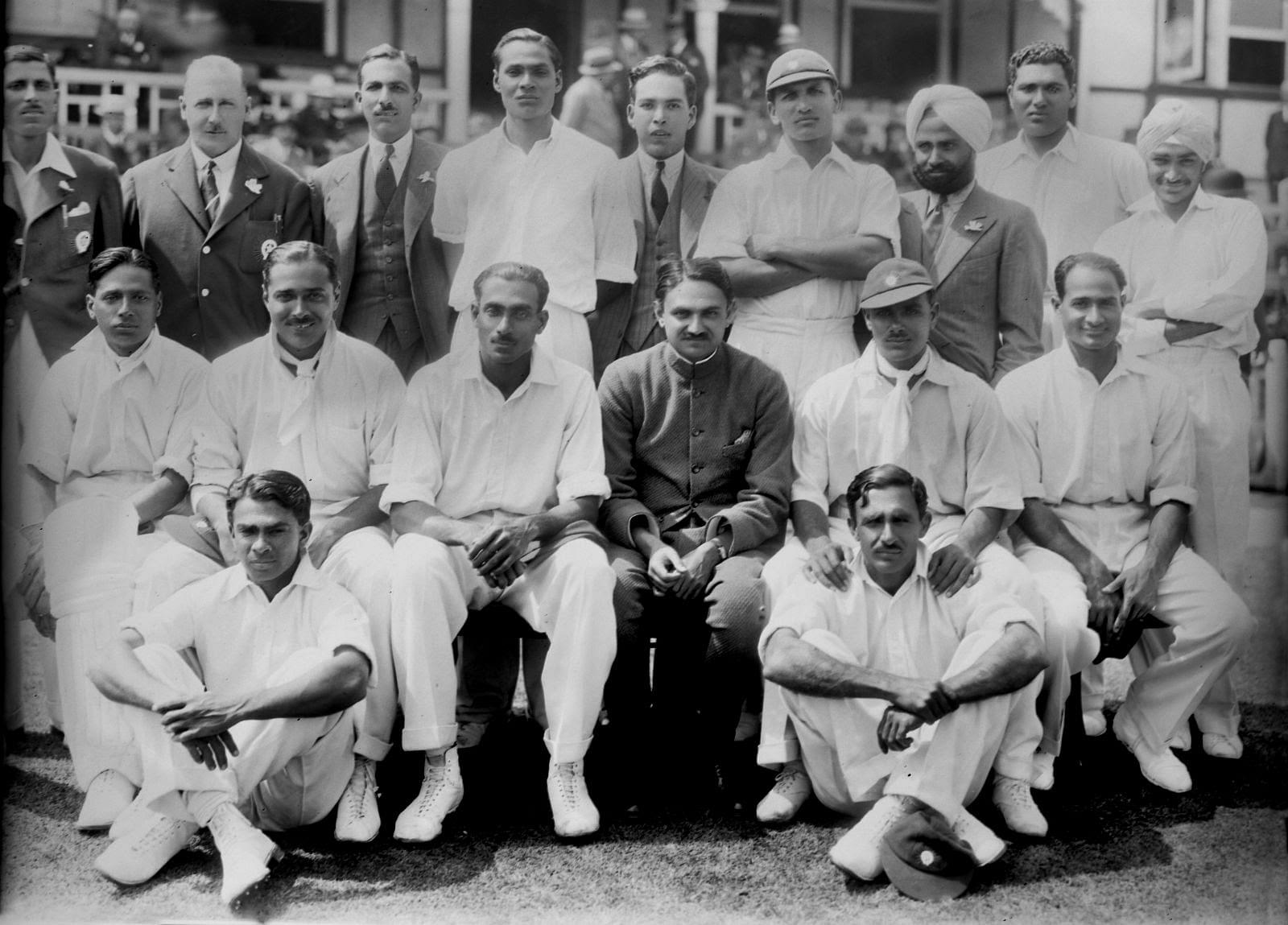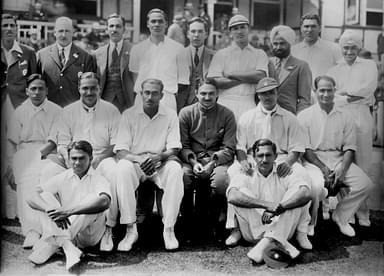We last saw our protagonists, the first official Indian cricket team to tour England, commence their journey to the motherland of cricket. The build-up and preparations to India’s first ever test match were eventful, as we have read earlier. The link for the events is given below.
Advertisement
Also Read: Of Princes at Patriots- India’s first Test Match
The cast
Before we move any further, it is essential to know more about some of the key players. Politics of the day dictated that the Indian team could be led overseas only by someone of royal heritage. Therefore, the team was led by the Maharaj of Porbandar, himself only a modest cricketer.
However, he possessed the necessary acumen to unite the players from different regions and commanded respect from the team. The vice-captain of the team was Kumar Shree Ghyanshyamsinhji of Limbdi, a decent batsman, who had learned his cricket at Cambridge. Incidentally, Porbandar and Limbdi were brothers by law.
The star player of the team was Col CK Nayudu, who we have discussed before. Nayudu was the Tendulkar of his day in reputation, if not in performance. He was a right handed attacking middle order batsman, who could tear the best bowling attacks to shreds. Apart from that he was a useful right arm medium bowler and a brilliant fielder.
Another pioneer in the team was Major Syed Wazir Ali. Like Nayudu, he too was an elegant middle order batsman and occasional right arm medium bowler. However he was continually overshadowed by Nayudu and came to resent him for it. His younger brother, Nazir Ali, was also part of the team.
Apart from them, India had a pair of new ball bowlers as well as any in their history. Mohammad Nissar is probably the fastest bowler to have ever played for India. The Lahore born Nissar was a bull of a man, and could swing and cut the bowl both ways. However, it was his express speed which marked him out from his peers.
Nissar’s partner with the new ball, L Amar Singh, could possibly be said to be the Kapil Dev of his generation. A fast medium bowler, his bowling was described as ‘coming off the pitch like the crack of doom’. Apart from this he was a hard hitting batsman and a brilliant slip fielder.
It must be noted that this was an undivided India, who had players, like Nissar and Wazir Ali, from modern day Pakistan.
Drama on the eve
As the day of India’s first test match dawned on 25th June, there was drama of a different kind. The captain, Porbandar, knew his cricketing limitations. Therefore, he humbly and wisely decided to sit out the test match. His deputy, Limbdi, had strained his back while scoring a century in a minor match. Therefore, Porbandar decided to appoint Nayudu as captain.
However, on the eve of the match, Porbandar was awoken in the dead of night by several members of the squad, who refused to play under Nayudu. It must be noted that this was an era in which social class and strata played a huge role in Indian culture.
While the cricketers had been accepting of being led by royalty, some of them could not fathom the fact of being led by a commoner. This, in spite of Nayudu being an accomplished cricketer. Also, it was possible that the strict discipline enforced on the players by Nayudu (a colonel in the Indian army) had an effect on this rebellion.
Cables were exchanged with the Maharaj of Patiala, in India, who was a major figure in the cricket establishment. The no nonsense Patiala gave strict instructions that the players were to follow Nayudu’s captaincy.
The match
Finally the morning of 25th June dawned at Lords and English captain, Douglas Jardine, elected to bat after winning the toss. The opening batsmen for England were Percy Holmes and Herbert Sutcliffe. Both of them had joined the English team late the previous night after finishing their county engagements.
If the English had taken India lightly, they were made to rue it. Nissar, bowling with fiery pace, uprooted the stumps of both openers. It must be noted that Holmes and Sutcliffe had a partnership of 555 for their county, only 10 days previously. Sutcliffe, in particular, is considered an all-time great cricketer.

The shell shocked English were thrown into further disarray as Frank Wooley was run out by Lall Singh, another brilliant fieldsman, reducing England to 19 for 3. However, captain Jardine played a masterful knock of 79. He was assisted by Walter Hammond, (Bradman’s legendary rival) and wicketkeeper, Les Ames, who scored 65.
India, struggled with no one rally present to back up Nissar and Amar Singh. Ultimately, England were bowled out before tea, for 259 and Nissar got a 5 wicket haul. Amar Singh and Nayudu picked up 2 wickets each. However, Nayudu and Nazir Ali had received injuries while fielding.
In reply, India finished the day at thirty without the loss of any wickets. The following day, the minnows held their own and at one stage were 110 for 2, before their lower order buckled and they were bowled out for 189. Nayudu, in spite of his injury, top scored with 40 and was ably supported by Wazir Ali, 31. Opener, Naoomal Jaoomal scored 33.
England, like in the first innings, started their second innings disastrously. This time the wreckers were Amar Singh and the third seamer, Jahangir Khan, both of whom picked up 2 wickets each to reduce England to 67 for 4.
Once again Jardine stepped in to rescue his team, scoring an unbeaten 85. He had a 91 run 5th wicket partnership with Eddie Paynter, who scored 60. Jahangir Khan finished with 4 wickets, but in this innings, Pheroze Palia strained his leg to further deplete India’s resources.

India were set a stiff target of 346. No one really expected them to get the runs, given the conditions and their injuries. Although Jaoomal and wicketkeeper, Janardhan Navle, added 40 for the first wicket. India soon collapsed to 108 for 7. Wazir Ali had scored 39.
Now Amar Singh showed his all-round ability as he put up 74 runs in 45 minutes with Lall Singh. Amar Singh actually managed 19 runs in one over. However, there was no swansong, as Lall departed for 29. India were bowled out for 187, losing by 158 runs. Amar Singh top scored with 51.
But, there was no shame in the defeat as India’s performance had far exceeded expectations. They were widely praised in the British media, with Nissar and Amar Singh highly commended. India’s bowling and fielding were said to be good, but not as good as that of the hosts.
India played 26 first class matches on the tour, including the one off test. They won 8 and lost 9 matches including the test. Overall, India was warmly received and were reported to ‘play the game in the most attractive manner’.
The team set sail from London on the 18th of September. The King sent a message of goodwill to the team. They reached Bombay on 3rd October, 6 months and a day since their departure.
Overall, India had acquitted themselves well and had impressed on lookers with their ability. Thus, the foundation was set for a historic journey, which has since brought much laurels to the country.
India XI (test match): JG Navle (wk), Naoomal Jaoomal, S Wazir Ali, C K Nayudu, SMH Colah, S Nazir Ali, PE Palia, Lall Singh, M Jahangir Khan, L Amar Singh, M Nissar


